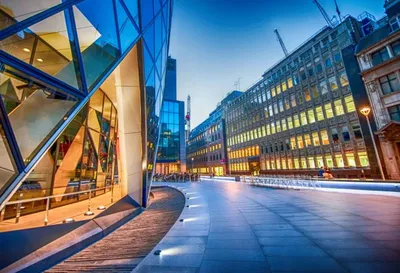Why 5G Isn’t Going To Fix Your Mobile Signal Problems!
The fifth-generation wireless technology, or 5G, has been lauded for its potential to revolutionise communication and connectivity with faster speeds, lower latency, and increased capacity. Despite these advantages, a significant challenge that has emerged is 5G’s limited ability to penetrate buildings effectively. This article will delve deeper into the reasons behind this issue.
Higher frequency bands and shorter wavelengths
5G networks utilise a range of frequencies, including millimetre-wave (mmWave) bands that enable faster data transfer rates and more efficient spectrum usage. However, they come with a trade-off: shorter wavelengths that are more easily absorbed or reflected by solid objects.
Shorter wavelengths have a harder time diffusing through obstacles and tend to experience greater signal attenuation when encountering barriers. This results in reduced coverage and weaker signals inside buildings, particularly when compared to the longer wavelengths used by earlier generations of wireless technology.
The impact of building materials on signal penetration
Modern construction materials play a significant role in impeding 5G signals. Common building materials, such as concrete, steel, and energy-efficient glass, can obstruct radio waves and hinder their ability to penetrate structures.

a) Concrete
Dense and thick concrete walls can absorb a considerable amount of radio frequency energy, causing signal attenuation and reduced coverage inside buildings. This is a particular problem in older buildings where the walls are much thicker than modern buildings.
b) Steel
Metals, like steel, are highly effective at reflecting radio waves. Steel beams, reinforcements, and metal cladding can create a “Faraday cage” effect, trapping radio waves and preventing them from passing through.
c) Energy-efficient glass
Low-emissivity (low-E) glass is designed to reduce heat transfer and improve insulation. However, it often contains a thin metallic coating that inadvertently blocks radio frequencies, resulting in weakened or non-existent 5G signals indoors.
Signal attenuation and path loss complexities
Signal attenuation or path loss refers to the weakening of radio waves as they travel through the air, affected by factors such as distance, interference, and atmospheric conditions. This phenomenon is particularly pronounced in higher frequency bands like those used by 5G.
When 5G signals encounter physical barriers, such as walls, ceilings, and windows, their strength decreases further, making it difficult for them to penetrate buildings effectively. Additionally, the increased path loss at higher frequencies requires denser infrastructure deployment to maintain signal quality, which can be challenging in urban environments.
Obstacles, interference, and multipath propagation
Urban environments present numerous obstacles that can obstruct and reflect 5G signals, including buildings, vehicles, and other structures. These obstructions can cause multipath propagation, which occurs when radio waves bounce off surfaces and take different paths before reaching the receiver.
Multipath propagation can result in signal distortion, interference, and reduced connectivity. This effect is particularly pronounced with mmWave frequencies due to their shorter wavelengths and higher susceptibility to reflection and absorption by objects in their path. Consequently, 5G’s ability to penetrate buildings is further complicated by these environmental factors.
Request a Callback
Simply pop your details in the form below and a member of the team will call you back.
Name
Phone
Request Callback